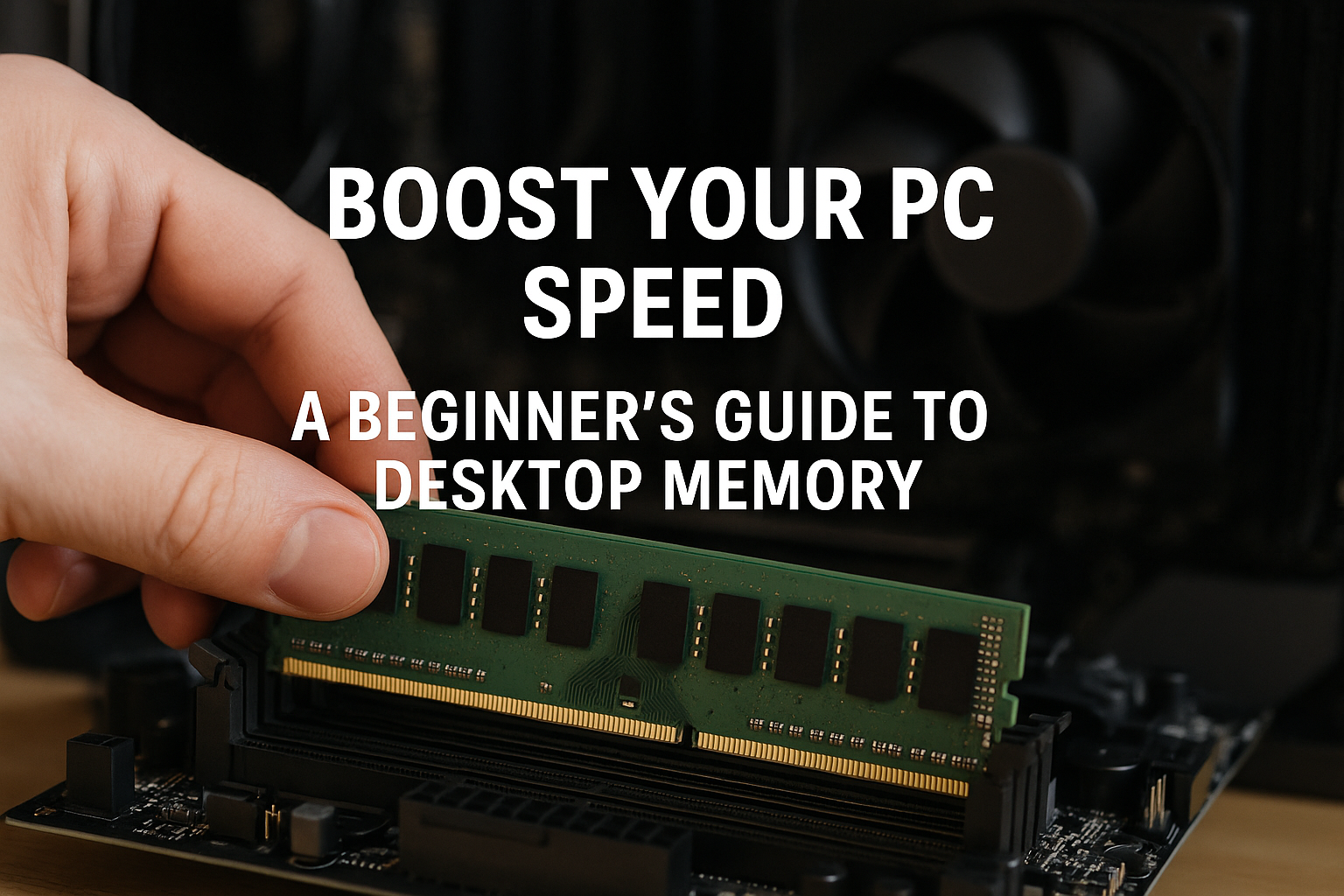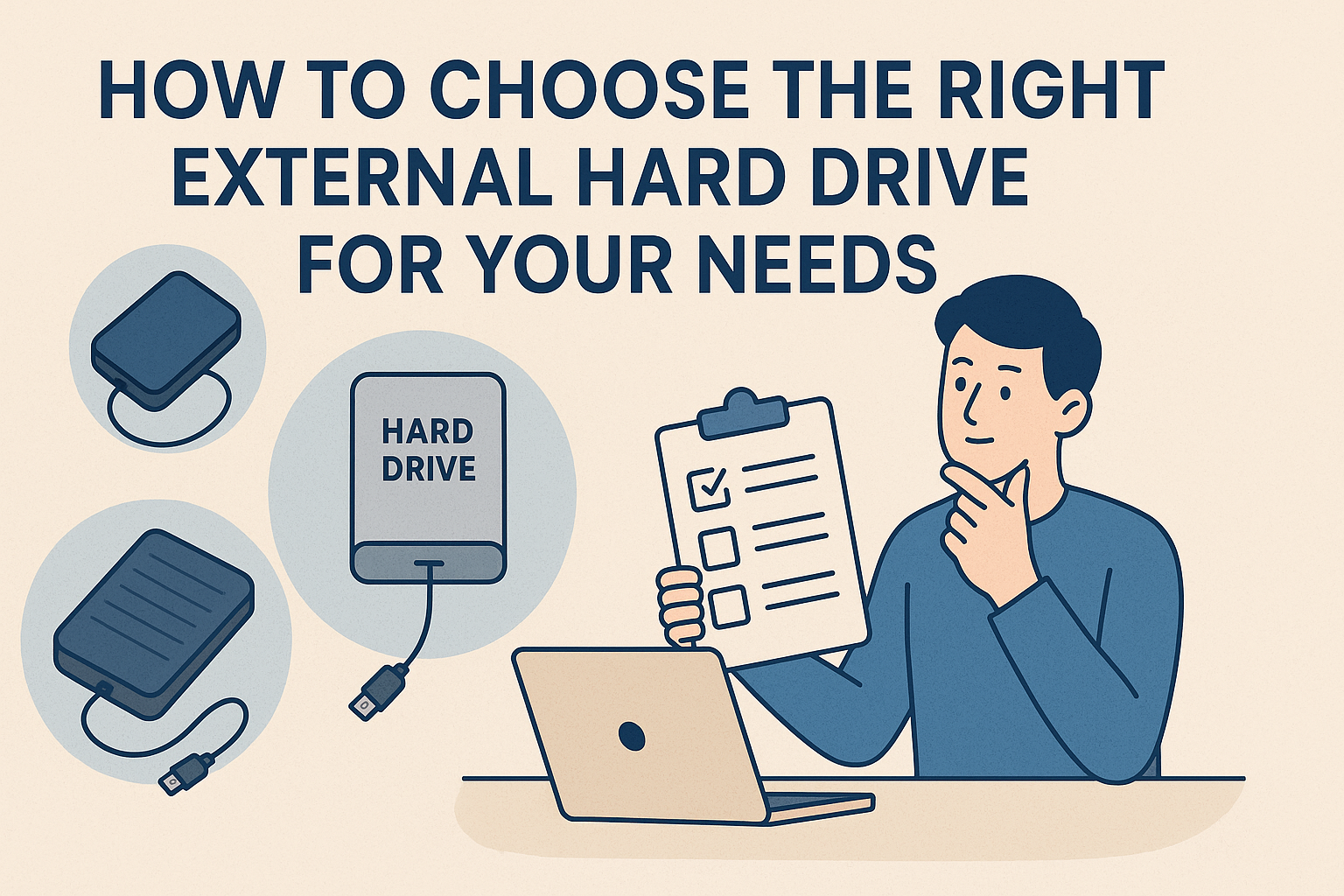Boost Your PC Speed: A Beginner’s Guide to Desktop Memory

In the world of computing, speed and performance are everything. Whether you're gaming, editing videos, multitasking with heavy apps, or just browsing the web, your system's desktop memory plays a crucial role. If your PC is sluggish, freezing often, or struggling to run multiple applications, upgrading your memory could be the game-changer you need.
In this beginner’s guide, we’ll explain what desktop memory is, how it differs from storage devices, and how upgrading it can significantly improve your computer’s performance.
What Is Desktop Memory?
Desktop memory, commonly referred to as RAM (Random Access Memory), is a critical component of your computer that temporarily stores data your system needs for quick access. It allows your CPU to retrieve and process data faster than pulling it from long-term storage like hard drives or SSDs.
In simpler terms:
Memory (RAM) = Short-term data access
Storage devices (HDDs, SSDs) = Long-term data storage
When your system has insufficient RAM, it relies more heavily on the storage device, which is significantly slower. This results in lag, slow app loading, and poor multitasking performance.
Why Desktop Memory Matters for Speed
Your desktop memory acts like a workspace for your PC. The more memory you have, the more room your system has to handle multiple tasks at once. Here’s how more or better memory can improve speed:
Faster application loading
Smooth multitasking
Improved gaming performance
Faster system boot times
Reduced freezing and crashing
If your PC constantly uses 80% or more of available memory, it’s a strong indicator that a memory upgrade is needed.
Desktop Memory vs. Storage Devices: What’s the Difference?
Many people confuse memory with storage, but they serve different purposes:
Component
Function
Examples
Desktop Memory (RAM)
Temporary, fast-access data for active tasks
8GB DDR4, 16GB DDR5
Storage Devices
Permanent data storage for OS, files, apps
SSD, HDD, NVMe SSD
A system with a high-capacity SSD but low RAM may still feel slow during heavy usage. Likewise, more RAM with a slow HDD limits performance. For best results, balance both.
How Much Desktop Memory Do You Need?
The amount of desktop memory needed depends on your usage:
Basic Use (Web, Office Apps): 8GB RAM
Multitasking, Light Editing: 16GB RAM
Gaming & Content Creation: 16GB – 32GB RAM
Professional Workstations: 32GB or higher
For most users in 2025, 16GB DDR4 or DDR5 is the new sweet spot for reliable performance.
Choosing the Right Desktop Memory
When upgrading or buying desktop memory, consider the following factors:
1. DDR Generation (DDR3, DDR4, DDR5)
Most modern motherboards use DDR4 or DDR5.
DDR5 is faster but slightly more expensive.
Ensure your motherboard supports the memory type.
2. Clock Speed (MHz)
Higher MHz = faster performance.
2666MHz to 3200MHz is typical for DDR4.
DDR5 often starts at 4800MHz and beyond.
3. Capacity (GB)
Choose memory capacity based on your workflow.
8GB is entry-level, while 16GB or 32GB is more future-proof.
4. Number of RAM Sticks (Channels)
Dual-channel kits (2 x 8GB) offer better performance than a single 16GB stick.
Always use matched pairs for optimal results.
How to Check Your Current Memory
Before upgrading, check your current memory configuration:
Windows: Press Ctrl + Shift + Esc → Click on Performance tab → Select Memory
macOS: Go to About This Mac → Click on Memory
Also, use tools like CPU-Z, Speccy, or your system BIOS to check RAM type and speed.
Installing Desktop Memory: A Quick Overview
Upgrading RAM is easier than you think. Here’s a quick step-by-step guide:
Turn off your PC and unplug all cables.
Open the PC case (usually a side panel).
Locate RAM slots on the motherboard.
Release old sticks (if replacing).
Insert new RAM sticks by aligning the notch and pushing firmly until they click.
Close the case, plug everything back, and boot up.
Your PC should automatically recognize the new memory. You can verify the upgrade through Task Manager or system settings.
Desktop Memory Troubleshooting Tips
After upgrading your memory, if your system doesn’t boot or throws errors:
Ensure the RAM is seated properly in the slots.
Check motherboard compatibility with the memory specs.
Reset the BIOS if needed.
Update your BIOS firmware for DDR5 compatibility (if applicable).
Additional Tips to Boost PC Speed
Upgrading desktop memory is just one piece of the puzzle. To optimize performance fully, consider the following:
Upgrade storage devices from HDD to SSD or NVMe.
Clean up startup programs and background tasks.
Run regular malware scans and system cleanups.
Defragment HDDs (not SSDs) and keep drivers updated.
Combining faster memory with high-speed storage devices ensures a well-balanced, responsive PC.
Final Thoughts
In today’s digital world, slow computers are frustrating and unproductive. Understanding the importance of desktop memory and how it works alongside storage devices is essential for anyone looking to enhance their computing experience.
Whether you're a beginner or tech enthusiast, upgrading your system’s memory is one of the easiest and most cost-effective ways to boost PC speed. Just make sure to choose compatible and reliable RAM that matches your system’s needs.
So, if your PC is showing signs of aging or slowing down, consider checking your desktop memory—it might just be the upgrade your computer is waiting for.
Note: IndiBlogHub features both user-submitted and editorial content. We do not verify third-party contributions. Read our Disclaimer and Privacy Policyfor details.




